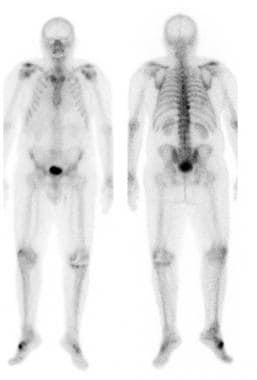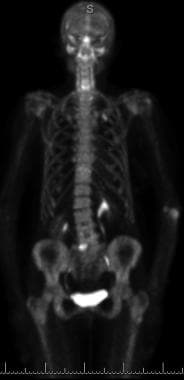Can You Have a Bone Scan With a Pacemaker
For patients that are under 70 if you have a pre-existing medical condition such as. A minimal trauma fracture.

Bone Scan Background Indications Contraindications
A pacemaker a small electrical device used to control an irregular.

. The radiologist compares the size and distributions of these bright and dark areas to determine whether a tissue is healthy. Unless the device you have is certified as. If you have symptoms but get a negative home test result you may need to keep taking precautions and test again and again.
However in some cases depending on the part of your body being scanned your doctor may ask you not to eat or drink anything for up to four hours before your MRI scan or conversely they may ask you to drink a large amount of water just before your MRI scan. Since the machine uses very powerful magnets to obtain the images needed the magnets can potentially attract the metal thats in your body. Chronic liver or renal disease.
This can help relax you and distract you from the noise. If you have any other X-rays or ultrasounds of your parathyroid glandneck at home please take them with you when you have the scan so the consultant can compare them with your parathyroid MIBI scan. Bone marrow spinal fluid blood and soft tissues vary in intensity from black to white depending on the amount of fat and water present in each tissue and the machine settings used for the scan.
It can diagnose muscle and bone disorders bone fractures and tumours. The bone density scan is bulk-billed for all patients that are 70 years old and above. Whether you have had previous X-rays or other medical imaging that needs to be compared with this new test this is commonly the case if you have a disease or condition that is being followed to assess your progress.
If you have a metal device or implant such as a pacemaker defibrillator cochlear implants or metal clips or coils you may not be able to have MRI. A CT scan can visualize nearly all parts of the body and is used to diagnose diseases or injuries as well as to plan medical surgical or radiation treatment. By Tara Parker-Pope Photo Credit Keith E.
CT scans have various purposes. The technician conducting the scan will monitor you from another room and you will have an intercom through which you can communicate if necessary. You will not be able to feel the magnetic field or the radio waves.
Because MRI uses powerful magnets the presence of metal in your body can be a safety hazard if attracted to the magnet. This can be due to previous heart attacks heart failure or cardiomyopathies. They include helping to diagnose a condition guiding medical procedures such as needle biopsies and monitoring the effectiveness of certain treatments such as cancer treatments.
Phone email fax or mail. Early onset of menopause. For example it may be possible to make a pacemaker or defibrillator MRI-safe or to monitor your heart rhythm during the procedure.
At the low doses of radiation a CT scan uses your risk of developing cancer from it is so small that it cant be reliably measured. If you decide to have your scan with us you will be looked after by an experienced multi-disciplinary care team. A CT scan is generally good for larger areas while an MRI scan produces a better overall image of the tissue under examination.
A nuclear medicine consultant a specialist doctor will look at your scan images and may ask questions about your condition. You may need to have an X-ray if youre unsure about any metal fragments in your body. Before having an MRI youll likely complete a questionnaire that includes whether you have metal or electronic devices in your body.
Rheumatoid arthritis to name a few you would be eligible to have a bulk-billed scan every 12 to 24 months depending. Examples of metal implants or fragments include. A pacemaker is an implantable electrical device which usually sits under the left collar bone although it can sit under the right in certain circumstances It is inserted in patients who have underlying arrhythmias usually an abnormally slow heart rate.
The procedure usually takes 3060 minutes and it is completely painless. You may have the option to listen to music during the scan. Metal in your body.
It can detect and monitor conditions such as cancer heart disease lung nodules and liver masses. A frame called a coil will be placed over your head and neck. Both have risks but are relatively safe procedures.
You can usually eat drink and take your medications as usual on the day of your MRI scan. A cardiac pacemaker or artificial pacemaker so as not to be confused with the natural pacemaker of the heart is a medical device that generates electrical impulses delivered by electrodes to cause the heart muscle chambers the upper or atria andor the lower or ventricles to contract and therefore pump bloodBy doing so this device replaces andor regulates the. As a precaution MRI scans are not usually done on women who are less than 12 weeks pregnant.
How the report is conveyed from the practice or hospital to your doctor ie. Radiography is an imaging technique using X-rays gamma rays or similar ionizing radiation and non-ionizing radiation to view the internal form of an objectApplications of radiography include medical radiography diagnostic and therapeutic and industrial radiographySimilar techniques are used in airport security where body scanners generally use backscatter X-ray. Morrison for The New York Times.
Even if not attracted to the magnet metal objects can distort the MRI image. You might not be able to have one if you have a pacemaker certain implants artificial joints or metal clips in your body for example.


Comments
Post a Comment